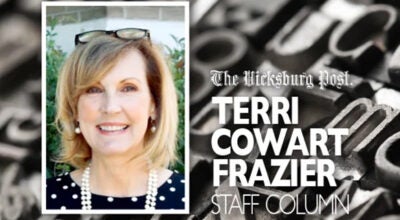A cotton-picking good story, even false
Published 11:56 am Thursday, September 10, 2015
Some swear it’s the strangest agricultural innovation ever concocted, and others say is the South’s most persistent hoax.
Either way, the story of W.W. Mangum and his cotton-picking monkeys sprouted up and flourished here a little over a century ago before spreading like kudzu. But unlike the vine that swallowed the South, the story of Mangum’s strange plantation had no bounds as it spread coast to coast in a time when information moved at the pace of a worn out plow mule.
In spring 1898, the story of Mangum’s monkeys made the rounds in hundreds of newspapers and was immortalized in the June 1899 edition of The School News and Practical Educator and an article in Cotton Planters’ Journal.
Supposedly, Mangum was attending a fair in Vicksburg in 1896 when he saw the antics of a number of trained moneys. The next fall, as cotton was ready to harvest on his plantation near Onward, Mangum is widely reported to have bought and trained somewhere between 10 and 50 apes of the Sphagtalis Vulgaris breed. There is no such monkey, though in the late 19th century most people — including scientists — would have no access to any information about monkey breeds.
“Next fall, Mr. Mangum intends to import 1,000 more monkeys from Africa, and he desires others join with him in importing a lot more to be scattered throughout the South,” the Woodville Republican reported March 25 1898.
One of the few folks who claim they saw the monkeys at work was a reporter from the Globe Republican.
“I must admit that it was a glorious sight to see, and one that did my heart great good. The rows were filled with monkeys, each one with her little cotton sack around her neck, picking away quietly and orderly, and without rush or confusion. When they got their sacks full they would run to the end of the row, where a man was stationed to empty them into the cotton baskets, then they would hurry back to their work. The monkeys seemed actually to enjoy picking,” the Globe Republican reported April 20, 1899.
I ran across the story this week at the Old Court House Museum where curator Bubba Bolm was showing me about a photo taken during Teddy Roosevelt’s famous bear hunt near Onward. Standing with Roosevelt’s guide, Holt Collier, are Mangum of cotton-picking monkey fame, John Parker, a first cousin to Mary Todd Lincoln and later governor of Louisiana, John A. McIlhenny, one of Roosevelt’s Rough Riders and son of the inventor of Tabasco Pepper Sauce, and Huger Foote, great-grandfather of noted historian Shelby Foote.
There in the woods near Mangum’s plantation, each of the men looks relaxed, except Foote, who is gazing up into the trees, almost distressed. Perhaps he saw one of Mangum’s monkeys, or maybe he’s rolling his eyes and groaning at the hoax.




